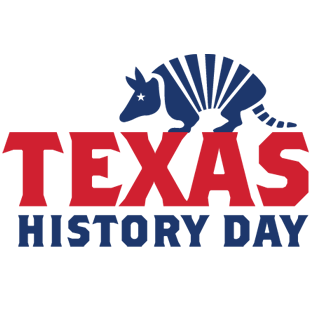Texas History Day, a part of the National History Day program, is a yearlong education program that culminates in an annual state-level history competition for students in grades six through twelve. It provides an opportunity for students to demonstrate their interest in, and knowledge of, history through creative and original papers, performances, documentaries, individual interpretive web sites, or three-dimensional exhibits.
Over the course of the school year, students research and produce a History Day entry, the results of which are presented at a regional competition in early spring. From there, some students advance to the state fair in May, or even to the national contest held each June at the University of Maryland at College Park. At each level of competition, outstanding achievement may be recognized through certificates, medals, trophies, or monetary awards. The most important rewards are the skills and insight that students acquire as they move through the History Day program.
As many as 50,000 young Texans are involved in the program at the regional and state level each year. More than 1,000 students participate in Texas History Day, and approximately 80 students represent Texas at National History Day each year.
THD participants have to qualify for the state-level competition through regional competitions.
Please see our Regions & Coordinators page. Check back often for updates, because we post regional fair dates and locations as soon as we receive them.
Of course! All students participating in a regional fair must first have their work evaluated at the local level by a teacher using the National History Day criteria and rubrics. Home-schooled students are encouraged to work with their local association(s) or consortium to set up such evaluations or local fairs. If you have questions regarding this process, please contact the appropriate people on our Regions & Coordinators page.
Students may enter in one of eight categories: individual or group performance, individual or group exhibit, individual or group documentary, individual or group interpretive web site, and individual paper. Please visit our Guides & Checklists page (part of our Teacher Resources menu) to find out more information about these categories.
A group is defined as two to five people. Each member of a group must participate in research and interpretation of the topic.
This can be allowed. Students do not necessarily need to attend the same school in order to participate with a given group. It is best if they are within the same ISD or school district however. Please check with your teacher first.
There are two separate divisions at THD; these are the Junior and Senior divisions. The Junior division consists of students in grades 6 through 8, and the Senior division consists of students in grades 9 through 12. There is no competition between these two divisions.
The top two finishers in each category — junior high school group performance, senior high school individual documentary, etc. — at Texas History Day advance to National History Day, just as the top two finishers in each category at the regional level advance to Texas History Day. Judges evaluate entries using three main criteria: historical quality, clarity of presentation, and adherence to theme.
The theme is determined at the national level, so students all over the United States are addressing the same sorts of topics. Although students may select topics on any aspect of local, regional, or world history, the presentation of their research and conclusions must clearly relate to the annual theme. While teachers and parents can offer help and advice on the mechanical aspects of the project, the students are solely responsible for the research, design, and creation of entries. The TSHA has compiled a list of entries from the Handbook of Texas Online that relate to this year’s History Day theme.









